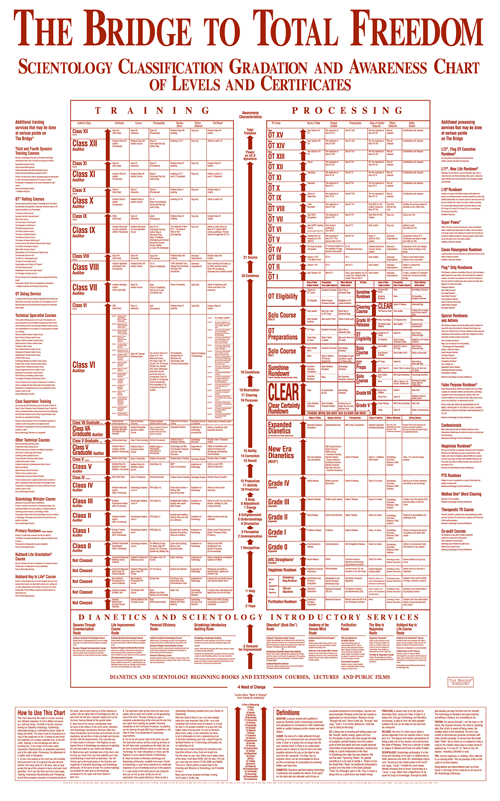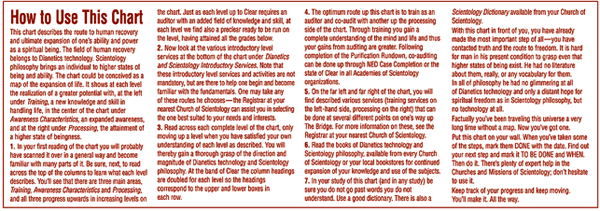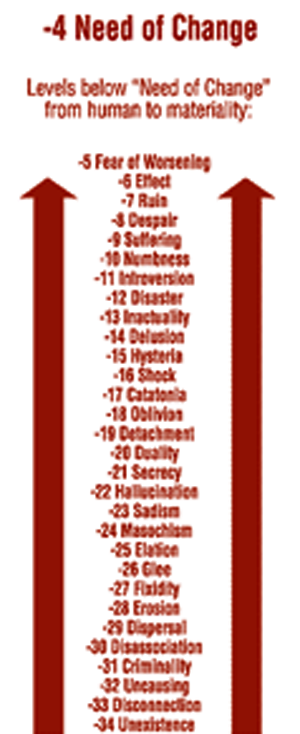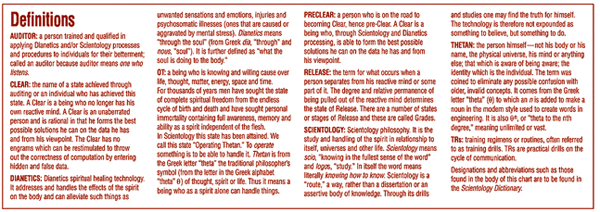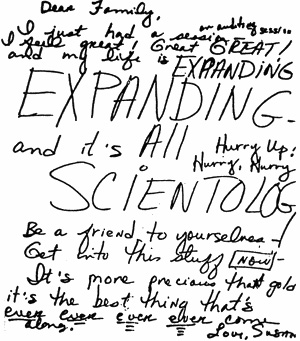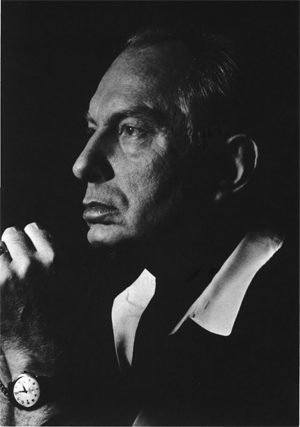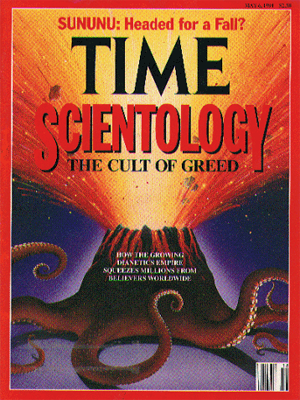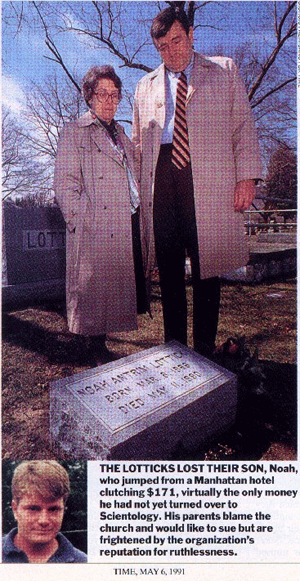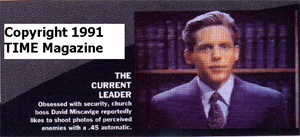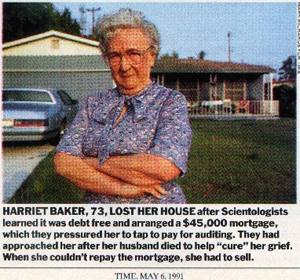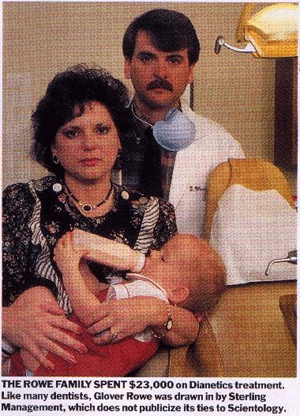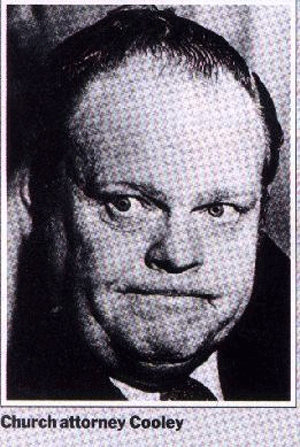David Berkowitzby Wikipedia
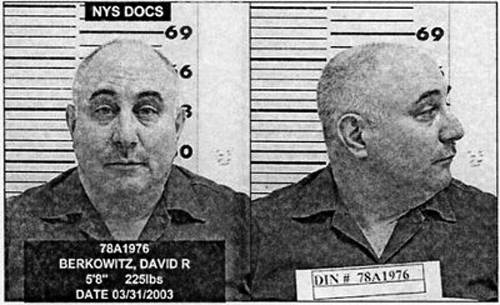 2003 New York State Department of Corrections mugshot
2003 New York State Department of Corrections mugshotDavid Richard Berkowitz (born Richard David Falco, June 1, 1953), also known as Son of Sam and the .44 Caliber Killer, is an American serial killer and arsonist whose crimes terrorized New York City from July 1976 until his arrest in August 1977.
Shortly after his arrest in August 1977, Berkowitz confessed to killing six people and wounding seven others in the course of eight shootings in New York between 1976 and 1977; he has been imprisoned for these crimes since 1977. Berkowitz subsequently claimed that he was commanded to kill by a demon who possessed his neighbor's dog.
Berkowitz later amended his confession to claim he was the shooter in only two incidents, personally killing three people and wounding a fourth. The other victims were killed, Berkowitz claimed, by members of a violent Satanic cult of which he was a member. Though he remains the only person charged with or convicted of the shootings, some law enforcement authorities argue that Berkowitz's claims are credible: according to John Hockenberry[1] formerly of MSNBC, many officials involved in the original "Son of Sam" case suspected that more than one person was committing the murders. Hockenberry also reported that the Son of Sam case was reopened in 1996 and, as of 2004, it was still considered open.
Early lifeBerkowitz was born Richard David Falco in Brooklyn, New York. His mother, Betty Broder, was married to Anthony Falco, with whom she had a daughter before the couple separated without legally divorcing. After this, she had an affair with the married Joseph Kleinman,[2] who fathered a son. Kleinman suggested she abort the child, but she gave birth to a boy and listed Falco as the father.
Before he was a week old, the baby was adopted by hardware store owners Nathan and Pearl Berkowitz, who reversed the order of his first and middle names in addition to giving him their own surname.[2]
John Vincent Sanders wrote that Berkowitz's childhood was "somewhat troubled. Although of above-average intelligence, he lost interest in learning at an early age and began an infatuation with petty larceny and pyromania."[3] Berkowitz's adoptive mother died of breast cancer when he was thirteen, and his home life became strained in later years, particularly because he disliked his adoptive father's second wife. He later claimed his new step-sister was interested in witchcraft, sparking an interest in the occult he would later pursue more actively.
In 1969, the 16-year-old Berkowitz attended the Woodstock Festival. He joined the United States Army in 1971, and served on active duty until his honorable discharge in 1974. He avoided service in the Vietnam War, instead serving in both the United States and South Korea.
In 1974 Berkowitz located his birth mother, Betty Falco. After a few visits, she disclosed the details of his illegitimate conception and birth, which greatly disturbed him. They fell out of contact, but Berkowitz did stay in touch with his half-sister, Roslyn.[2]
After leaving the Army, Berkowitz held several blue collar jobs. At the time of his arrest, he was employed by the U.S. Postal Service.
Cult claimsBerkowitz claims that he joined a cult in the spring of 1975. Initially, he said, the group was involved in harmless activities, such as séances and fortune telling. Gradually, however, Berkowitz claimed that the group introduced him to drug use, sadistic pornography and violent crime. They began, he claims, by killing dogs, mostly German Shepherds. Over a dozen mutilated dog corpses were discovered in Yonkers, especially near Untermeyer Park, which Berkowitz claimed was a frequent meeting place for the cult.
Crimes begin
First attacksBerkowitz claimed that his first attacks on women occurred in late 1975, when he attacked two women with a knife on Christmas Eve. One alleged victim was never identified, but the other victim, Michelle Forman, was injured seriously enough to put her in the hospital.[4] Not long afterward, Berkowitz moved to an apartment in Yonkers.
Donna Lauria and Jody Valenti shootingPolice composite sketch of the Lauria-Valenti shooter juxtaposed with a mugshot of David Berkowitz.At about 1:10 a.m. on July 29, 1976, Mike and Rose Lauria returned to their apartment in Pelham Bay after dining out. Their daughter Donna, 18, and her friend Jody Valenti, 19, were sitting in Valenti's Oldsmobile, parked outside the apartment, discussing their evening at the Peachtree, a New Rochelle discotheque. As Valenti was about to leave, Mike Lauria agreed to his daughter's suggestion that they walk the family's dog together. Before he went inside to retrieve the poodle, Lauria noticed a man sleeping in a yellow compact car parked across the street and about sixty feet behind his own car. Neighbors would report to police that an unfamiliar yellow compact car had been cruising the area for hours before the shooting.[5]
After her parents were inside, Donna Lauria opened the car door to depart, noticing a man quickly approaching them. Startled and angered by the man's sudden appearance, Lauria said, "Now what is this…"[5] From the paper sack he carried, the man produced a handgun and, crouching as he aimed, fired three shots. Lauria was struck in her chest by one bullet that killed her almost instantly, Valenti took a bullet in her thigh, and the third missed both girls. The shooter turned and quickly walked away.
Valenti, who survived her injuries, said she did not recognize the killer. She described him as a white male in his 30s with a fair complexion, standing about 5'9" and weighing about 160 lb (73 kg). His hair was short, dark and curly in a "mod style."[5] This description was echoed by Mike Lauria in his description of the man who was sitting in the yellow compact car parked behind Valenti and Lauria.
Detectives from the 8th Homicide precinct of the New York Police Department had little in the way of evidence. Most importantly, they were able to determine that the handgun used was a .44 caliber Charter Arms Bulldog. A high-power, five-shot revolver intended for use in close quarters, the .44 Bulldog was identified because the unusual manufacturing process of its barrel left distinctive marks on each slug.
Police followed two working hypotheses in the absence of further evidence: that the shooter was a spurned admirer of the popular Lauria or that the shooting was a mistaken assassination attempt of the wrong person. The neighborhood had seen recent mob activity, and police even hinted that Mike Lauria, a member of the Teamsters union, might be involved in organized crime.
Berkowitz later claimed that he shot Lauria and Valenti, and that several other cult members were involved in the crime, either by surveillance of the victims, or by acting as lookouts.[6]
Carl Denaro and Rosemary Keenan shootingIn the early morning of October 23, 1976, another shooting occurred, this time in Queens.
Carl Denaro, 25, and Rosemary Keenan, 38, were parked in a secluded residential area in Flushing, Queens. Keenan was driving her own Volkswagen Beetle, and Denaro was in the passenger seat. At about 1:30 a.m., the car's windows seemed to explode, and the duo dropped low in their seats as several bullets struck the car. Denaro and Keenan did not realize someone was shooting at them, even as Denaro was bleeding from a bullet wound to his head. They panicked and Keenan drove to Peck's, a bar about half a mile away. Keenan had only superficial injuries from the broken glass, but Denaro eventually needed a metal plate to replace a portion of his skull. Neither victim had seen whoever had made the attack.
Police determined that the slugs embedded in Keenan's car were .44 caliber bullets, but they were so damaged and deformed that they thought it was unlikely that they could ever be linked to a particular weapon.[7] Denaro had shoulder-length hair, and police would later speculate that the shooter had mistaken him for a girl. Keenan's father was a 20-year veteran police detective of the NYPD, spurring an in-depth investigation. As with the Lauria-Valenti shooting, however, there seemed to be no motive for the shooting, and police made little progress in the case. Though many details of the Denaro-Keenan shooting were very similar to the Lauria-Valenti case, police did not initially suspect a connection, partly because the shootings occurred in different boroughs of New York City and were investigated by different local police agencies.
Berkowitz later claimed that, while he observed and helped plan the crime, an unnamed female cult member actually shot Denaro.[8] The victims survived primarily, claimed Berkowitz, because the shooter was unfamiliar with the powerful recoil of a .44 Bulldog.[8]
Donna DeMasi and Joanne Lomino shootingLate in the evening of November 26, 1976, Donna DeMasi, 16, and Joanne Lomino, 18, had walked home from a movie, and were chatting under a streetlight outside Lomino's home. A man approached to within about ten feet of the girls. They later described him as about 5'9", tall and slender, weighing perhaps 150 lb (68 kg) with straight, dirty blond hair and dark eyes. He wore a slim, knee-length coat reminiscent of military surplus gear.
Startled but not frightened by his sudden appearance, DeMasi and Lomino suspected the man was lost and asking directions. In a high-pitched voice he said, "Can you tell me how to get,"[8] then he produced a revolver. He shot each of the victims once, and as they fell to the ground injured, he fired several more times, striking the apartment building before running away. Having heard the gunshots, a neighbor rushed from their apartment and saw the blonde shooter rush by, gripping a pistol in his left hand.
DeMasi and Lomino were hospitalized with serious injuries: Lomino was ultimately rendered a paraplegic, but DeMasi's wounds were less serious.
Based on the testimony of DeMasi, Lomino, and their neighbor, police produced several composite sketches of the blonde shooter. Police also determined the gun was a .44, but the slugs were so deformed that linking them to a particular gun was all but ruled out.
Berkowitz later claimed that while he helped plan the DeMasi-Lomino shooting, the actual perpetrator was cult member John Carr, and that a Yonkers police officer, also a cult member, was involved in the crime.[8]
Christine Freund and John Diel shootingThe new year brought more shootings in Queens. In the early morning of January 30, 1977, an engaged couple, Christine Freund, 26, and John Diel, 30, were sitting in Diel's Pontiac Firebird, preparing to drive to a dance hall after having seen the motion picture Rocky.
Three gunshots penetrated the car at about 12:40 a.m. In a panic, Diel drove away for help. He suffered minor superficial injuries, but Freund was shot twice. She died several hours later at the hospital. Neither victim had seen their attacker(s).
Police determined the shooter had again used a .44 Bulldog. Police made the first public acknowledgment that the Freund-Diel shooting was similar to the earlier cases, and that the crimes might be connected: the earlier victims had been struck with .44 caliber bullets, if not confirmed Bulldog revolvers, and the shootings targeted young women with long, dark hair and/or young couples parked in cars.
NYPD sergeant Richard Conlon stated that police were "leaning towards a connection in all these cases."[9][10] Composite sketches of the black-haired Lauria-Valenti shooter and the blonde Lomino-DeMasi shooter were released, and Conlon noted that police were looking for multiple "suspects", not just one.[9]
Berkowitz later claimed that while "at least five" cult members were at the scene of the Freund-Diel shooting, the actual shooter was a cult associate nicknamed "Manson II", who was brought in from outside New York due to a special motive of which Berkowitz claimed to know no details.[8]
Virginia Voskerichian shootingAt about 7:30 p.m. on March 8, 1977, Columbia University student Virginia Voskerichian, 19, was walking home from school. She lived about a block from where Christine Freund was shot. The Voskerichian shooting differed from the other Son of Sam crimes in many respects. All the other victims were couples, and were shot on weekends in the late night or early morning.
There were no direct witnesses to the Voskerichian murder, which happened on the victim's own street. In a desperate move to defend herself, Voskerichian lifted her textbooks between herself and her killer, only to have the makeshift shield penetrated, the bullet striking her head and killing her.
Moments after the shooting, a neighborhood resident who had heard the gunshots was rounding the corner onto Voskerichian's street. He nearly collided with a person he described as a short, husky boy, 16 to 18 years old and clean-shaven, wearing a sweater and watch cap, who was sprinting away from the crime scene. The neighbor said the youth pulled the cap over his face and said, "Oh, Jesus!" as he passed by, sprinting.[11]
Other neighbors claimed to have seen the "teenager," and another matching Berkowitz's description, loitering separately in the area for about an hour before the shooting.[11] In the following days, the media repeated police claims that this "chubby teenager" was the suspect in the shooting.[11]
Berkowitz later claimed that he was at the Voskerichian murder scene, but the actual shooter was a "woman from Westchester."[12] Additionally, Berkowitz claimed the Voskerichian shooting was partly designed to confuse police by seeming to change the modus operandi established in earlier cult shootings.
Press and publicity
Press conference of March 10, 1977In a March 10, 1977 press conference, NYPD officials and New York City Mayor Abraham Beame declared that the same .44 Bulldog revolver had fired the shots that killed Lauria and Voskerichian.[13] Official documents would later surface, however, saying that while police strongly suspected the same .44 Bulldog had been used in the shootings, the evidence was actually inconclusive.[13]
The same day, the Operation Omega task force made its public debut. Charged solely with investigating the .44 Caliber shootings, the task force was led by Deputy Inspector Timothy J. Dowd, composed of over 300 police officers. Police speculated that the killer had a vendetta against women, perhaps due to chronic social rejection, and also declared that the "chubby teenager" was regarded as a witness, not a suspect in the Voskerichian shooting. The police regarded the taller, black-haired male shooter in the Lauria-Valenti case as the shooter in all the .44 Caliber murders.
Publicity and political implicationsThe crimes earned considerable mass media publicity, with television, newspapers and radio publishing every detail and speculation of the case. Australian publisher Rupert Murdoch had recently purchased the New York Post, and the paper offered perhaps the most sensational coverage of the crimes, as a result vaulting from near-bankruptcy into profitability. Mayor Beame, meanwhile, helped funnel unprecedented amounts of money to the NYPD to help solve the case.
Another shooting
Alexander Esau and Valentina Suriani shootingIn the early morning of April 17, 1977, Alexander Esau, 20, and Valentina Suriani, 18, were in the Bronx, only a few blocks from the scene of the Lauria-Valenti shooting. At about 3:00 a.m., they were each shot twice and killed. Suriani died at the scene, and Esau died in the hospital several hours later without being able to describe his attacker(s).
In the days afterwards, police repeated their theory that only one man was responsible for the .44 murders: the chubby teenager in the Voskerichian case was still regarded as a witness, while the dark-haired man who shot Lauria and Valenti was considered the suspect.[14]
Berkowitz later claimed that he was responsible for the Esau-Suriani shootings.[12]
Letters and profiling
Son of Sam letterIn the street near the Esau-Suriani shooting, a police officer discovered a hand-written letter. Written mostly in block capital letters with some lower-case letters, it was addressed to NYPD Captain Joseph Borrelli.[15]
In full, with misspellings intact, it read:
I am deeply hurt by your calling me a wemon [sic] hater! I am not. But I am a monster. I am the "Son of Sam." I am a little brat. When father Sam gets drunk he gets mean. He beats his family. Sometimes he ties me up to the back of the house. Other times he locks me in the garage. Sam loves to drink blood. "Go out and kill," commands father Sam. Behind our house some rest. Mostly young — raped and slaughtered — their blood drained — just bones now. Papa Sam keeps me locked in the attic too. I can't get out but I look out the attic window and watch the world go by. I feel like an outsider. I am on a different wavelength then [sic] everybody else — programmed too [sic] kill. However, to stop me you must kill me. Attention all police: Shoot me first — shoot to kill or else keep out of my way or you will die! Papa Sam is old now. He needs some blood to preserve his youth. He has had too many heart attacks. "Ugh, me hoot, it hurts, sonny boy." I miss my pretty princess most of all. She's resting in our ladies house. But I'll see her soon. I am the "Monster" — "Beelzebub" — the chubby behemouth. I love to hunt. Prowling the streets looking for fair game — tasty meat. The wemon of Queens are prettyist of all. It must be the water they drink. I live for the hunt — my life. Blood for papa. Mr. Borrelli, sir, I don't want to kill anymore. No sur, no more but I must, 'honor thy father.' I want to make love to the world. I love people. I don't belong on earth. Return me to yahoos. To the people of Queens, I love you. And I want to wish all of you a happy Easter. May God bless you in this life and in the next. And for now I say goodbye and goodnight. Police: Let me haunt you with these words: I'll be back! I'll be back! To be interpreted as — bang bang bang, bank, bang — ugh!! Yours in murder, Mr. Monster[15]
Though discovery of the letter was an open secret, the contents were not made public. Only a few hints were leaked: police speculated that the letter-writer might be familiar with Scottish English. The phrase "me hoot, it hurts, sonny boy" was taken as a Scots-accented version of "my heart, it hurts, sonny boy"; and the police also hypothesized that the shooter blamed a dark-haired nurse for his father's death, due to the "too many heart attacks" phrase, and the facts that Lauria was a medical technician and Valenti was studying to be a nurse.[16] On July 28, New York Daily News columnist Jimmy Breslin alluded to the "wemon" quirk and referred to the shooter watching the world from "his attic window."[17]
Psychological profile and other police investigationsAfter consulting with several psychiatrists, police released a psychological profile of their suspect on May 26, 1977. He was described as neurotic and probably suffering from paranoid schizophrenia and believed himself to be a victim of demonic possession.[17]
Police questioned the owners of 56 .44 Bulldog revolvers legally registered in New York City, and forensically tested each weapon, ruling them out as the murder weapons. Among other unsuccessful ideas, police created traps with undercover officers posed as lovers parked in isolated areas, hoping to lure the shooter.
Breslin letterOn May 30, 1977, columnist Jimmy Breslin of the New York Daily News received a hand-written letter from someone who claimed to be the .44 shooter. The letter was postmarked early on May 30 in Englewood, New Jersey. On the reverse of the envelope was hand-printed a precisely-centered quatrain:
Blood and Family/Darkness and Death/Absolute Depravity/.44
The letter read:
Hello from the gutters of N.Y.C. which are filled with dog manure, vomit, stale wine, urine and blood. Hello from the sewers of N.Y.C. which swallow up these delicacies when they are washed away by the sweeper trucks. Hello from the cracks in the sidewalks of N.Y.C. and from the ants that dwell in these cracks and feed in the dried blood of the dead that has settled into the cracks. J.B., I'm just dropping you a line to let you know that I appreciate your interest in those recent and horrendous .44 killings. I also want to tell you that I read your column daily and I find it quite informative. Tell me Jim, what will you have for July twenty-ninth? You can forget about me if you like because I don't care for publicity. However you must not forget Donna Lauria and you cannot let the people forget her either. She was a very, very sweet girl but Sam's a thirsty lad and he won't let me stop killing until he gets his fill of blood. Mr. Breslin, sir, don't think that because you haven't heard from me for a while that I went to sleep. No, rather, I am still here. Like a spirit roaming the night. Thirsty, hungry, seldom stopping to rest; anxious to please Sam. I love my work. Now, the void has been filled. Perhaps we shall meet face to face someday or perhaps I will be blown away by cops with smoking .38's. Whatever, if I shall be fortunate enough to meet you I will tell you all about Sam if you like and I will introduce you to him. His name is "Sam the terrible." Not knowing the what the future holds I shall say farewell and I will see you at the next job. Or should I say you will see my handiwork at the next job? Remember Ms. Lauria. Thank you. In their blood and from the gutter "Sam's creation" .44 Here are some names to help you along. Forward them to the inspector for use by N.C.I.C: [sic] "The Duke of Death" "The Wicked King Wicker" "The Twenty Two Disciples of Hell" "John 'Wheaties' -- Rapist and Suffocator of Young Girls. PS: Please inform all the detectives working the slaying to remain. P.S: [sic] JB, Please inform all the detectives working the case that I wish them the best of luck. "Keep 'em digging, drive on, think positive, get off your butts, knock on coffins, etc." Upon my capture I promise to buy all the guys working the case a new pair of shoes if I can get up the money. Son of Sam[18]
Underneath the "Son of Sam" was a logo or sketch that combined several symbols. The writer's question, "What will you have for July 29?" was taken as an ominous threat: July 29 would be the anniversary of the first .44 Caliber shooting.
Police and public response to the Breslin letterBreslin notified police, who thought the letter was probably from someone with knowledge of the shootings. Sophisticated in its wording and presentation, especially when compared to the crudely written first letter, police suspected the Breslin letter might have been created in an art studio or similar professional location by someone with expertise in printing, calligraphy, graphic design or architecture.[19]
Based on the "Wicked King Wicker" reference, police arranged a private screening of The Wicker Man, a 1970s horror film.
A week later, after consulting with police and agreeing to withhold portions of the text, the Daily News published the letter, and Breslin urged the killer to turn himself over to authorities. Reportedly, over 1.1 million copies of that day's paper were sold.[20]
The letter caused a panic in New York, and based on references in the publicized portions of the letter, police received thousands of tips, all of which proved baseless.[19]
As all the shooting victims so far had long, dark hair, thousands of women in New York cut or dyed their hair, and beauty supply stores had trouble meeting the demand for blond wigs.[21] Despite being one of the hottest summers on record, people stayed indoors at night, ignoring the longstanding tradition of spending sultry evenings outdoors.
Shootings resume
Sal Lupo and Judy Placido shootingOn June 26, 1977, there was another shooting. Sal Lupo, 20, and Judy Placido, 17, had left the Elephas discotheque in the Bayside section of Queens. The young couple was sitting in their car at about 3:00 a.m. when Placido said, "This Son of Sam is really scary — the way that guy comes out of nowhere. You never know where he'll hit next."[22] Moments later, three gunshots blasted through the car.
Both were struck by slugs, but their injuries were relatively minor, and both survived. Neither Lupo or Placido had seen their attacker(s),[23] but witnesses reported a tall, stocky, dark-haired man sprinting from the area, and a blonde man with a mustache who drove from the neighborhood in a Chevy Nova without turning on its headlights. Police speculated the dark-haired man was the shooter, and that the blonder man had observed the crime.[23]
Berkowitz later claimed that cult member Michael Carr shot Lupo and Placido.[24] Additionally, Berkowitz claimed that cult members had long wanted to shoot someone at the Elephas disco, thinking the site significant in light of their interest in the work of noted 19th century occultist Eliphas Levi.[24]
Stacy Moskowitz and Robert Violante shootingIt was near the one-year anniversary of the first .44 caliber shootings, and police set up a sizable dragnet, focusing on past hunting grounds of Queens and The Bronx. However, the next .44 shooting was in Brooklyn.
Early on July 31, 1977, Stacy Moskowitz and Robert Violante, both 20, were in Violante's car, which was parked under a streetlight near a city park. They were kissing when a man approached to within about three feet of the passenger side of Violante's car, fired several gunshots into the car, striking both victims in the head, before running into the park. Moskowitz died several hours later in the hospital. Violante survived, though one of his eyes was destroyed and he retained only very limited vision in the other eye. With her short, curly blonde hair, Moskowitz was a departure from the other female victims. Based on telephone calls to police within seconds of the shooting, the crime occurred at 2:35 a.m.
The Moskowitz-Violante crime produced more witnesses than any of the other Son of Sam murders, notably the only direct eyewitness who was not an intended victim. During the shooting, Tommy Zaino, 19, was parked with his date in a car three car lengths ahead of Violante's. Moments before the shooting, Zaino saw a peripheral glimpse of the shooter's approach and happened to glance in his rear view mirror just in time to see the crime occur. Due to the bright street light and full moon, Zaino clearly saw the perpetrator for several seconds, later describing him as 25 to 30 years old, of average height (5'7" to 5'9") with shaggy hair that was dark blonde or light brown — "it looked like a wig", Zaino said.[25]
About a minute after the shooting, a woman seated next to her boyfriend in his car on the other side of the city park saw a "white male [who was wearing] a light-colored, cheap nylon wig" sprint from the park and enter a "small, light-colored" auto, which drove away quickly.[25] "He looks like he just robbed a bank," said the woman, who wrote what she could see of the car's license plate: unable to determine the first two characters, she was certain the others were either 4-GUR or 4-GVR.[25]
Other witnesses included a woman who saw a light car speed away from the park about 20 seconds after the gunshots,[25] and at least two witnesses who described a yellow Volkswagen driving quickly from the neighborhood with its headlights off.[26] A neighborhood resident given the pseudonym Mary Lyons heard the gunshots and Violente's calls for help, and glancing from her apartment window, she saw a man she later positively identified as Berkowitz, who was walking casually away from the crime scene as many others were rushing towards the scene to render aid.[27]
Shortly after 2:35 a.m., a man given the pseudonym Alan Masters was passing through an intersection a few blocks from the park. Masters was nearly struck by what he described as a yellow Volkswagen Beetle that sped through the intersection, against the red light and without headlights, with the driver holding his door shut with his arm as he drove. Angered and alarmed, Masters followed the Volkswagen at high speed for several minutes before losing sight of the vehicle. Masters described the driver as a white male in his late 20s or early 30s, with a narrow face; dark, long, stringy hair; several days growth of dark whiskers on his face; and wearing a blue jacket.[28] Upset, Masters neglected to note the Volkswagen's license plate number, but he thought it might have been a New Jersey rather than a New York plate. Violante encountered a very similar man as he and Moskowitz were in the park shortly before the shooting, describing him as a "grubby-looking hippy" with whiskers, wiry hair over his forehead, dark eyes, and wearing a denim jacket.[29]
Berkowitz would later claim that the shooter in the Moskowitz-Violante case was a friend of John Carr, who had arrived from North Dakota for the occasion.[30] Additionally, Berkowitz would claim that after his Ford Galaxie, license plate 561 XLB, received a parking ticket at 2:05 a.m. for being parked too close to a fire hydrant near the city park, he tried to persuade two other cult members at the scene to postpone or relocate the crime.[31] Berkowitz claimed his suggestion was overruled, and he was ordered to remain in the area to make sure no police were nearby.
Police activities after the Moskowitz-Violente shootingPolice didn't learn of the Moskowitz-Violente shooting until about 2:50 a.m., and Dowd didn't think it was another Son of Sam shooting until an officer at the scene reported that large-caliber shells had been used.[32]
About an hour after the shooting, police set up a series of roadblocks, stopping hundreds of cars to question drivers and inspect vehicles. Based on extended interviews of Masters and others who described a Volkswagen speeding from the crime scene, police now suspected that the shooter owned or drove such a vehicle. In subsequent days, police determined there were over 900 Volkswagens in New York or New Jersey, and they made plans to track down each of these cars and their owners.[33]
Justice system
Suspicion and captureThe evening of the Moskowitz and Violante shooting, Cacilia Davis, who lived near the crime scene, saw Berkowitz loitering in the neighborhood and glaring menacingly at passersby for several hours before removing a parking ticket from his yellow Ford Galaxie, which had been parked too close to a fire hydrant. Two days after the shooting, she contacted police.
Despite their claims to the contrary, police initially thought Berkowitz a possible witness, rather than a suspect. Not until August 9, 1977, seven days after Cacilia Davis informed police about the man with the parking ticket, did NYPD Detective James Justis telephone Yonkers police to ask them to schedule an interview with Berkowitz. The Yonkers police dispatcher who first took Justis' call was Wheat Carr, the daughter of Sam Carr and sister of Berkowitz's alleged cult confederates John and Michael Carr.[34]
Justis asked "the [Yonkers] police for some help tracking [Berkowitz] down. Mike Novotny was a sergeant at the Yonkers Police Department. According to Novotny, the Yonkers police had their own suspicions about Berkowitz, in connection with other strange crimes in Yonkers, crimes they saw referenced in one of the Son of Sam letters. To the shock of the NYPD they told the New York City detective that Berkowitz might just be the Son of Sam."[1]
The next day, police investigated Berkowitz's car parked on the street outside his Pine Street apartment in Yonkers. Police saw a Commando Mark III rifle in the backseat. Searching the car, police found a duffel bag filled with ammunition, maps of the crime scenes and a letter to Sgt. Dowd of the Omega task force, threatening further murders. Police decided to wait for Berkowitz to emerge from the apartment rather than risk a violent encounter in the narrow apartment hallway.
Berkowitz emerged from the building shortly before 10:00 p.m., carrying a .44 Bulldog in a paper sack. Police arrested Berkowitz as he was starting the car outside his apartment on Pine Street in Yonkers on August 10, 1977. His first words upon arrest were reported to be, "You got me. What took you so long?"[35]
Police searched his apartment, and found it in disarray, with Satanic graffiti on the walls. They also found a diary wherein Berkowitz took credit for dozens of arsons throughout the New York area (some sources allege that this number might be as high as 1,411).[36]
After police had brought Berkowitz into custody, Mayor Beame came out to the public and said, "The people of the City of New York can rest easy because of the fact that the police have captured a man whom they believe to be the Son of Sam."[37]
QuestioningPolice were worried that, if challenged in court, their initial search of Berkowitz's vehicle might be ruled unconstitutional. Police had no search warrant, and their justification for the search of Berkowitz's car might seem flimsy. They had searched initially based on the rifle visible in the back seat, though possession of such a rifle was legal in New York State, and required no special permit.
Berkowitz quickly confessed to the shootings, however, and expressed an interest in pleading guilty in exchange for receiving life imprisonment rather than facing the death penalty. Berkowitz was questioned for about 30 minutes in the early morning of August 11, 1977, and he quickly confessed to the "Son of Sam" killings.
During questioning, Berkowitz said that the "Sam" mentioned in the first letter was Sam Carr, his former neighbor. Berkowitz claimed that Carr's black labrador retriever, Harvey, was possessed by an ancient demon, and that it issued irresistible commands that Berkowitz must kill people. Berkowitz said he once tried to kill the dog, but was unsuccessful due to supernatural interference.
SentencingDuring his sentencing, Berkowitz repeatedly chanted "Stacy was a whore" at a low yet audible volume.[38] He was referring, presumably, to Stacy Moskowitz, who died in the final .44 caliber shooting. His behavior caused an uproar, and the courtroom was adjourned. Berkowitz later claimed that his statement was a response to Moskowitz's mother, who frequently opined that Berkowitz should be executed.
On June 12, 1978, he was sentenced to six life sentences in prison for the murders, making his maximum term 365 years. He was first imprisoned at the Attica Correctional Facility. He was also given additional terms for assault and attempted murder.
Berkowitz's life in prisonIn 1979, there was an attempt on Berkowitz's life. He refused to identify the person(s) who had attacked him with a knife, but suggested that the act was directed by the cult he once belonged to. He bears a permanent scar from the wound that took 52 stitches to close.
In 1987, Berkowitz became a born again Christian in prison. According to his personal testimony, his moment of conversion occurred after reading Psalm 34:6 from a Gideon's Pocket Testament Bible given to him by a fellow inmate.[39] In the same testimony, he stated that his obsession with and heavy involvement in the occult played a major role in the Son of Sam murders.
In March 2002, Berkowitz sent a letter to New York Governor George Pataki asking that his parole hearing be canceled, stating: "In all honesty, I believe that I deserve to be in prison for the rest of my life. I have, with God's help, long ago come to terms with my situation and I have accepted my punishment."[39] In June 2004, he was denied a second parole hearing after he stated that he did not want one. The parole board saw that he had a good record in the prison programs, but decided that the brutality of his crimes called for him to stay imprisoned. In July 2006, the board once again denied parole on similar grounds, with Berkowitz not in attendance at the hearing. He is very involved in prison ministry and regularly counsels troubled inmates.
In June 2005, Berkowitz sued his former attorney, Hugo Harmatz, claiming he had taken possession of Berkowitz's letters and other personal belongings in order to publish a book of his own. Berkowitz stated that he would only drop the lawsuit if the attorney signed over all money he makes to the victims' families. On October 25, 2006, Berkowitz and Harmatz settled out of court, with Harmatz agreeing to return the disputed items to Berkowitz's present attorney Mark Jay Heller, and to donate part of his book profits to the New York State Crime Victims Board.
Shortly before her death in 2006, Stacy Moskowitz's mother wrote Berkowitz a letter saying she had forgiven him for his crimes.[40] Moskowitz lived her final days in a Miami co-op, surrounded by pictures of her daughters, whom she talked about constantly. "...she said she did forgive everyone," said her close friend and neighbor, Sharon Denaro. "She needed to relieve herself of anger to be able to move forward with her life. She would say things like, 'This kind of anger can make you sick. Don't let anger eat you up'."
Berkowitz is housed in Sullivan Correctional Facility in Fallsburg, New York. His "official" website is maintained on his behalf by a church group as he is not allowed access to a computer.[39] Berkowitz's next parole hearing is slated for May 2010; he has been denied parole four times thus far.
Berkowitz plans to write a memoir, entitled Son of Hope: The Prison Journals of David Berkowitz, which will be published through Morning Star Communications. Berkowitz himself will receive no money from publication, and a portion of the proceeds will go to the New York state crime victims board for distribution to the victims of his crimes.[39]
He is also corresponding with an advocate of murder victims and working to stop the sales of memorabilia related to murderers[41]
LawsOne major side effect of Berkowitz's murder spree were the "Son of Sam laws" enacted in several states in the 1980s.
The first of these laws was enacted in New York state after rampant speculation about publishers offering Berkowitz large sums of money for his story. The new law, named for Berkowitz, authorized the state to seize all money earned from such a deal from a criminal for five years, with intentions to use the seized money to compensate victims.
Later claims
Satanic cult claimsWithin a few weeks of his arrest, Berkowitz was hinting that others were involved in the .44 murders. In a letter to the New York Post dated September 19, 1977, Berkowitz repeated the possessed dog story, but closed out his missive with the warning, "There are other Sons out there, God help the world."[42]
In later years, he has discussed the cult claims in greater detail, but alleges that he cannot divulge all he knows without putting his family at risk. The cult had roughly two dozen core members in New York, the "twenty-two disciples of hell" mentioned in the Breslin letter. The cult had ties across the U.S., claimed Berkowitz, and was deeply involved in drug smuggling and other illegal activities. Berkowitz reportedly invited the former priest and exorcist Malachi Martin to visit him to discuss his past Satanic cult involvement.[43]
Hockenberry asserts that, even aside from the Satanic cult claims, many officials doubted the single-shooter theory, writing, "[w]hat most don't know about the Son of Sam case is that from the beginning, not everyone bought the idea that Berkowitz acted alone. The list of skeptics includes both the police who worked the case and the prosecutor from Queens where five of the shootings took place."[1]
Son of Sam case reopened based on cult claimsJournalist Maury Terry began investigating the Son of Sam shootings before Berkowitz was arrested. Doubtful of the single shooter theory favored by police, Terry dug deeper into the case, noting a number of unresolved questions and inconsistencies that he first publicized in a March 1978 newspaper article.
Eventually interviewing Berkowitz several times, Terry uncovered evidence that he argues strongly support the idea that a violent offshoot of the Process Church was responsible for the Son of Sam murders and many other crimes. After consulting with police and agreeing to withhold some names and other details, Terry publicized his conclusions first in a series of newspaper articles distributed by the Gannett syndicate in 1979, and later in his book The Ultimate Evil, which has been expanded several times since its initial 1987 publication.[38] Queens' district attorney John Santucci, who thought the case against Berkowitz was riddled with inconsistencies and unresolved questions, was so impressed with Terry's research that, "he agreed to reopen the Son of Sam case ... But to date no-one else has ever been charged in connection with the crimes."[22]
Arlis Perry claimsIn October 1978 Berkowitz mailed a book about witchcraft and other occult subjects to police in North Dakota. He had underlined several passages, offering some marginal notes, including the phrase: "Arliss [sic] Perry, Hunted, Stalked and Slain. Followed to Calif. Stanford University."
Arlis Perry, a newlywed 19-year-old North Dakota native, had been killed in a chapel on the grounds of Stanford University on October 12, 1974. Her murder remains unsolved. Berkowitz mentioned the Perry murder in a few letters, suggesting that he heard details of the crime from "Manson II", the culprit and a member of the violent Satanic cult. In the San Jose Mercury News, Jessie Seyfer noted that "investigators interviewed him in prison and now believe he has nothing of value to offer" regarding the Perry case.[44]
Real-life sons of SamBerkowitz claimed that brothers John and Michael Carr, the real life sons of Yonkers resident Sam Carr, were members of the same Satanic cult. John was the "John Wheaties, rapist and suffocator of young girls" mentioned in the Breslin letter.
Both Carr brothers died within two years of Berkowitz's arrest. John Carr was discovered dead in February 1978 in his girlfriend's North Dakota home; police initially viewed his death as suspicious, but it was ultimately ruled a probable suicide. Michael Carr died in a single-car traffic accident in October 1979, on Manhattan's West Side Highway.
Berkowitz claims that both Carr brothers were probably murdered by Satanic cult members because their heavy drug use marked them as untrustworthy and likely to become informants.
Depictions• The 1985 CBS film Out of the Darkness, the first to deal with the Son of Sam killings, was told from the point of view of Ed Zigo, one of the detectives responsible for capturing Berkowitz by poring over parking tickets given to an illegally parked car in Brooklyn near where Stacy Moskowitz was murdered. Zigo was played by Martin Sheen, and Berkowitz was played by Robert Trebor.
• The 1999 film Summer of Sam, directed by Spike Lee, depicts the tensions that develop in a Bronx neighborhood during the shootings. Berkowitz was played by Michael Badalucco.
• The 2007 ESPN mini-series The Bronx is Burning features the murders as a backdrop.
• Son of Sam is a 2008 Lionsgate film by Ulli Lommel focusing on Berkowitz's satanic cult connection.
References1. Hockenberry, John. "Did 'Son of Sam' really act alone?".
http://www.msnbc.msn.com/id/5351509. Retrieved May 17 2006.
2. Bardsley, Marilyn. "Son of Sam, David Berkowitz, famous serial killer - Letter 17". The Crime library.
http://www.crimelibrary.com/serial_kill ... er_17.html. Retrieved October 9 2007.
3. "I am the Son of Sam!". Fortean Times. August 2002.
http://www.forteantimes.com/features/ar ... f_sam.html. Retrieved 2008-09-24.
4. Montaldo, Charles. "David Berkowitz - The Son of Sam". About Crime.
http://crime.about.com/od/murder/p/sonofsam.htm. Retrieved September 27 2006.
5. Terry, 1999, p 23-24.
6. Terry, 1999, p 528.
7. Terry, 1999, p 27.
8. Terry, 1999, p 529
9. Terry, 1999, p 32
10. New York Daily News. February 1, 1977.
11. Terry, 1999, p 36-37
12. Terry, 1999, p 530
13. Terry, 1999, pp 38-40
14. Terry, 1999, p 43
15. Bardsley, Marilyn. "Son of Sam, David Berkowitz, famous serial killer". The Crime Library.
http://www.trutv.com/library/crime/seri ... ter_1.html. Retrieved March 21 2007.
16. Terry, 1999, pp 43-44
17. Terry, 1999, p 47
18. Terry, 1999, pp 48-50
19. Terry, 1999, 51
20. "Son of Sam - David Berkowitz". Altered Dimensions.
http://www.altereddimensions.net/crime/SonOfSam.htm. Retrieved September 27 2006.
21. "Bath in New York".
http://devibathory.tripod.com/thebloodo ... s/id3.html. Retrieved April 19 2007.
22. Summers, Chris. "Crime Case Closed - David Berkowitz". Archived from the original on 2007-02-19.
http://web.archive.org/web/200702191407 ... itz1.shtml. Retrieved September 27 2006.
23. Terry, 1999, 53
24. Terry, 1999, p 539.
25. Terry, 1999, p 70
26. Terry, 1999, p 70; pp 71-72
27. Terry, 1999, pp 71-72
28. Terry, 1999, p 79
29. Terry, 1999, p 68
30. Terry, 1999, p 530-531
31. Terry, 1999, p 66
32. Terry, 1999, p 78
33. Terry, 1999, p 91
34. Terry, 1999, p 98
35. Terry, 1999, p 113
36. Scott, Shirley Lynn. "What Makes Serial Killers Tick? - Pyromania." The Crime Library. trutv.com.
37.
http://www.upi.com/Audio/Year_in_Review ... 3-1/#title "Son of Sam, 1977 Year in Review."
38. Terry, Maury (1987). The Ultimate Evil: An Investigation into America's Most Dangerous Satanic Cult. Doubleday. ISBN 0-385-23452-X.
39. "The Official Home Page of David Berkowitz." forgivenforlife.org.
40. "A Mom Dies - Forgiving Son Of Sam". NY Post.com. September 28, 2006.
41.
http://www.washingtonpost.com/wp-dyn/co ... 02063.html42. quoted in Terry, 1999, p. 147
43. Martin, Malachi. "An Article on Exorcism".
http://www.starharbor.com/fr_martin/exorcism.html. Retrieved 2008-09-24.
44. Snyder, Jessie. "Detective searches for 1974 Stanford church killer".
http://www.prisonpotpourri.com/COURTSan ... iller.html. Retrieved 2008-09-24.
Further readingBreslin, Jimmy and Dick Schaap (1978). .44: a Novel. Viking Press. ISBN 0-670-32432-9.
Klausner, Lawrence D. (1980). Son of Sam: Based on the Authorized Transcription of the Tapes, Official Documents and Diaries of David Berkowitz. McGraw-Hill. ISBN 0070350272.
Newfield, Jack and Paul DuBrul (1977). The abuse of power: the permanent Government and the fall of New York. Viking Press. ISBN 0-670-10204-0.
Rowlett, Curt (2006). Labyrinth13: True Tales of the Occult, Crime & Conspiracy. Chapter 10, "Son of Sam and the Process Church of the Final Judgment: Exploring the Alleged Connections". Lulu Press. ISBN 1-4116-6083-8.
Terry, Maury (1987). The Ultimate Evil: An Investigation into America's Most Dangerous Satanic Cult. Doubleday. ISBN 0-385-23452-X.
External linksDavid Berkowitz section from CharlieManson.com
Journal Caso abierto David Berkowitz
Arise and Shine Journals and other information about David Berkowitz
I Am the Son of Sam An article asking whether Berkowitz was the only killer using the Son of Sam MO and if he was linked to a Black Magic underground
"David Berkowitz television interview". Archived from the original on 2007-12-11.
http://web.archive.org/web/200712112333 ... 65131.html. May 2007, WCBS-TV in New York
1977 Coverage of the Case from WCBS-AM in New York
